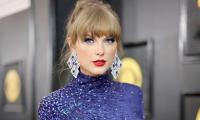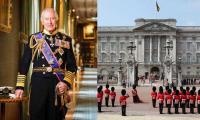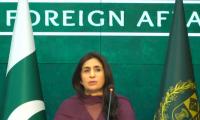Noted journalist and human rights worker IA Rehman traced the history of the emergence of Karachi as a centre of trade, commerce and, later, political activity.
He was speaking as keynote speaker at the Fifth Karachi Conference that concluded on Sunday. Rehman said that Karachi had a strong presence of traders and lawyers, in addition to a flourishing Zoroastrian (Parsi) community but communal politics came late to Karachi.
It was during the Khilafat Movement which, according to him, was backed both by Hindus and Muslims. Their main demand was the separation of Sindh from Bombay. The 1932 resolution for the separation of Sindh from Bombay was totally secular, he said.
Sindh, said Rehman, had the Pakistan Scheme in 1938 while the Lahore Resolution had it in 1940. He said the Lahore Resolution of 1940 and the Sindh Assembly’s resolution of 1943 came true in December 1971 with the emergence of Bangladesh because both resolutions had spoken of “separate Muslim states”.
Rehman said the importance of Karachi came about with the emergence of Pakistan in 1947 when Karachi was chosen to be the capital.
Saddar rehabilitation
Speaking at a session titled, “The proposed rehabilitation of Saddar”, architect and town planner Hafeez Habibi said that old Karachi was known for its architecture and glory but things changed with the onset of industrialisation when there was a shift from the close-knit community spirit to machines.
Habibi, with an illustrious career in developing planning and project designing behind him, including a stint with Nespak, said, “Today Karachi is a city with a dilapidated environment, encroachments, and unplanned and chaotic traffic.”
He went on to say, “We understand that no intervention can be meaningful till this is made part of the overall national development.” After the Industrial Revolution, the West was faced with similar challenges due to urbanisation.
In such a milieu of psychological and intellectual change, he said, it was felt imperative to hold consultations with stakeholders. Today, added Habibi, there was unmitigated traffic congestion in the Saddar area due to excessive transportation routes and cross-vehicular activity.
Our aims, he said, should be addressing human issues, minimising traffic flow and the ‘pedestrianisation’ of downtown streets. As regards the latter, he said, “We propose designating of pedestrian trails, bicycle tracks, and the reintroduction of tram cars.
Development expert Rudaina Siddiqui, who has rich experience having worked in the development sector in the United Kingdom, said that Saddar, the centre of Karachi had undergone changes over time but what had not – and could not be – changed was the historical and cultural influence of Saddar, especially Empress Market, the “heart” of the place.
The markets, shops, and hawkers, all played a crucial role by responding to the needs of the citizens. Livelihoods as well as emotional bonds from generation to generation were linked with Saddar, the Empress Market in particular.
Any changes that occur, she said, must take this factor into account. Saddar, she said, generated a huge economy creating thousands of jobs.
Bushra Sarwar, a final year student at the Dawood College of Engineering and Technology, said that what sets a place apart is the heritage and what it teaches us about the history that has happened before we were born, promoting respect for those who lived in different societies and different times.
“Architectural monuments cultivate in us a pride in our past. Unfortunately, our city fathers have destroyed one park after another, all in the name of development, with the few remaining ones also set for elimination.”
She was speaking with special reference to the Jahangir Park in Saddar.
Architect Arif Hassan was the moderator of the session, while architect Mukhtar Hussain was the discussant.
Dr Asma Ibrahim, president of the Karachi Conference Foundation, in her address traced the progress that the Karachi Conference had made as regards creating an awareness of heritage and the rich history of the area. She said that the forum had no official funding but was run on the financial help and funding by enthusiastic volunteers.
This, she said, had helped the organisation retain its independence and that was how they could put forth their views without let or hindrance.
An aerial view of Karachi city. — AFP/FileCelebrating ShakespeareThe National Academy of Performing Arts is...
This representational image shows a woman touching a dead body's legs. — APP/FileThe woman killed on Wednesday in...
The University of Karachi entrance gate. — APP/FileThe role of educated mothers is crucial for the development of...
Secretary Information Department Nadeem-ur-Rehman Memon. — Facebook/Umerkot - Gateway to TharSecretary Information...
Commissioner Karachi Syed Hasan Naqvi chairs a meeting to assess the preparations for the upcoming 29th International...
Sindh’s chief secretary Syed Asif Hyder Shah chairs a meeting with the National Highway Authority on April 18,...







